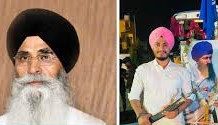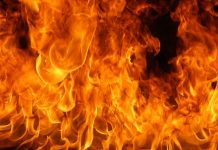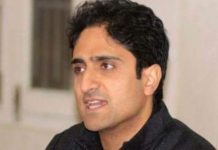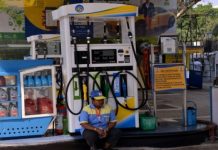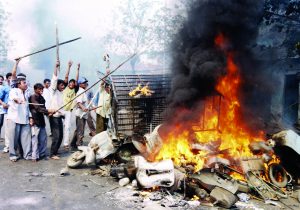 In the Spring of 2020, dark images of the Gujarat pogrom hold out. It’s been 18 years when the killings and carnage took off in the various locales of Gujarat during the 2002 pogrom. Even today, the very word ‘Gujarat’ drags along faces of hundreds of the men and women and children affected in one way or the other.
In the Spring of 2020, dark images of the Gujarat pogrom hold out. It’s been 18 years when the killings and carnage took off in the various locales of Gujarat during the 2002 pogrom. Even today, the very word ‘Gujarat’ drags along faces of hundreds of the men and women and children affected in one way or the other.
Those destroyed in that pogrom are still awaiting justice. I recall the words of Zakia Jafri — “I’m going to carry on this fight for justice, not just for myself but for all those killed on that day 28 February 2002. My husband Ahsan Jafri fought valiantly till the very end, till he was killed by those rioters, but till the end he did not give up. Like Hazrat Imam Hussain and his companions were martyred during the battle of Karbala, innocent children and women and men were killed in that Gujarat pogrom in 2002.”
♦ ♦ ♦
All these years, I have been meeting the survivors of that pogrom of 2002. I recall months after the Gujarat pogrom of 2002, I had visited the New Delhi situated ISS (Institute of Social Sciences) and was introduced to the then mayor of Ahmedabad, Aneesa Mirza. And as I enquired about the conditions in her home state she ‘d shut her eyes as though in deep anguish and pleaded that I don’t bring up the topic as she falls ill and then it takes weeks for her to recover. “Please don’t mention those killings! I saw live human beings were burnt alive… though I’d witnessed several riots, nothing was so gruesome as those human killings in Gujarat in 2002…” Few years later when I tried to get in touch with her, I was told she’d passed away.
And on the afternoon of May 7, 2013 as Zakia Jafri spoke from a public platform in New Delhi, it’s her pair of eyes that hit almost instantly. They carried immense pain. So did her voice as she addressed the audience with ‘As Salaamu Alaikum’ (Peace be on you) and then started narrating horrifying details to the Gujarat carnage of 2002; how, in front of her eyes, the right-wing mobs torched their home at the Gulberg Society.
“My husband was sure that the Congress was likely to come to power as Keshubhai had failed to deliver the goods. My husband had told me this on February 27, 2002. And he also said that the BJP could come to power only by whipping up the anti — Muslim sentiments and that the BJP could use the Godhra incident and convert it into an opportunity for votes. And the very next morning, that is on February 28, our neighbours started pouring into our home, asking whether my husband was at home …they’d looked re-assured that he was there.
“But by the time it was 9 am it was apparent that tension was building up in our area. First, shops and then vehicles were burnt and looted. Then a boy was attacked and injured and later he took shelter in our home but he too was killed by the rioters who’d attacked and burnt and destroyed our home. As the Police Commissioner did not visit our Society even as the situation was getting uncontrolled, so my husband went out on the road and met him in full public view and requested him for additional deployment of forces but no police help came. And killings started and continued …69 people known to us were killed there on that same day yet no police help came to stop the carnage, those killings went on…”
On the role of the police Zakia detailed, “Police was not to be seen in our Gulberg Society or in the surrounding area till about late evening. By then our Gulberg Society was completely burnt down and looted. Many residents were burnt alive. I cannot forget those scenes : those rioters stripping off, tearing off clothes of women and brutalizing them.I saw those charred bodies…
“Late evening the police came when the genocide was near complete. There was total destruction all around. What was left of the Gulberg Society! Nothing! There were dead bodies …most were burnt beyond recognition.Even at that stage the role of the few Dy SP level police officers was horrifying…”
♦ ♦ ♦
I also met several Gujarati Muslim children, who had been rescued from the riotous locales of Gujarat and brought to New Delhi. Most of these children had been witness to the communal carnage. They had seen their parents and siblings brutally attacked and killed by the Hindutva brigades.
At one of the interactive meets with a group of these young children as activist Shabnam Hashmi recounted the backgrounders to these children, I’d continued looking at their sad innocent children who had gone through the worst possible situation so early in life ….As Shabnam had detailed, “Once we actually started working with these kids, we faced many difficulties. For example Ismail Qureshi was studying in 8th class at the time when carnage took place. Members of his family were killed in front of his eyes. He somehow managed to escape. He, while in the class, always preferred to sit on the last row, remained very reserve and quite. Refused to respond and participate in class activities. The problem with him was that he had partially lost his memory. So whatever he learnt or studied, completely forgot by the next day. Ismail has started mixing up but required constant attention and help. After a long class a teacher said, ‘Lets take a break, as all of you must be tired by now”. Siddique replied, ‘How can we get tired in so quickly, when we ran for hours to save ourselves, when the mobs attacked us.”
Shabnam had focused on several aspects, “Each child had a different story to tell. This year they had gone to celebrate Holi with Harsh Mander. Yahya’s shirt got drenched. When he took off his shirt, everyone was surprised to see two deep burn wounds on his back. Sohail’s father was killed and sister was raped and then killed. He and his mother managed to escape as she was admitted in hospital at the time when riot broke out. Yaseen’s father and grandmother were cut into pieces in front of him.”
♦ ♦ ♦
The hapless survivors of the 2002 pogrom have been asking: why they were so very systematically attacked and ruined, if not raped and molested? Why are the masterminds to that pogrom not arrested? Why is the political mafia allowed to unleash terror on the hapless innocents? Why is fascism devouring and destroying many more structures, human or otherwise.
Gujarat pogrom had brought along intense verse –Bureaucrat poet, JP Das, wrote in 2002 After Gujarat, a paean to the power of poetry in the darkest of times.
“After Gujarat /
will there be poetry? /
Could poets write /
after Alexandria was razed ? /
After Auschwitz /
Hiroshima and Vietnam /
after the Emergency /
afterBabri Masjid /
9/11 and Iraq?….Poetry cannot be
banished /
It returns at will /
to Plato’s Republic /
to Stalin’s Siberia /
to Pokhran and Kalahandi /
following in the footprints /
of violence /
as it chronicles /
the descent of man /
As with history, to poetry/
there is no end / ….
Poetry will be written /
despite fatwas and bans /
Poetry will defy the Gulag/
it will ignore the censor’s blue pencil /
and the fundamentalist ‘s frown/
poetry will be written/
even as books /
are being burnt …After Gujarat /
poetry will be written /
About Gujarat itself /
beginning with /
the shame of Ayodhya /
and following the bloody trail /
to Godhra,to Gujarat /
and on to Mumbai …When Babri rises/
poetry will affirm /
that temples are made /
not with blood -scribed bricks /
or stones carved in hate /
that they, like poetry /
are founded on /
imagination and faith /
in the hearts of men.”
letters@tehelka.com







